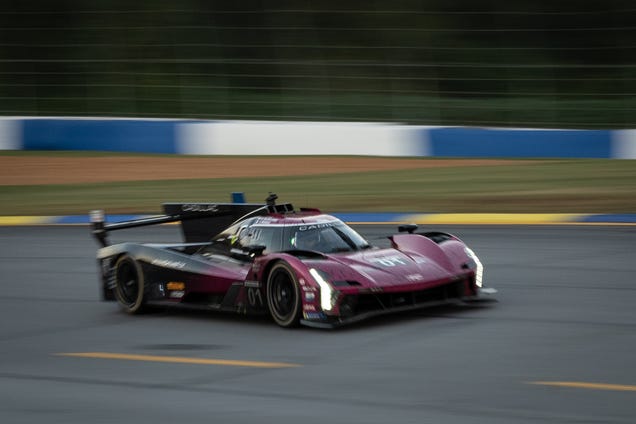The Unforgettable Victory of the Pink Cadillac at Petit Le Mans
The recent Petit Le Mans race at Road Atlanta was nothing short of extraordinary, highlighted by a remarkable feat: a pink Cadillac racing at an astonishing 170 mph in complete darkness, devoid of headlights. This spectacle not only captivated the audience but also raised questions about the implications of such a daring maneuver in motorsport.
What Made the Pink Cadillac Stand Out?
The standout feature of this race was undoubtedly the pink Cadillac, which defied expectations and norms in multiple ways. Traditionally, racing vehicles are designed with optimal visibility and safety in mind, particularly during night races. However, this Cadillac, which has become a symbol of boldness and innovation, showcased an audacious approach to racing strategy.
The decision to race without headlights might seem reckless at first glance, but it speaks to a deeper understanding of the vehicle’s capabilities and the driver’s skill. The team behind this car likely conducted extensive simulations and tests to ensure that the lack of headlights would not compromise performance or safety. This level of confidence and preparation is indicative of the meticulous planning that goes into professional racing.
The Role of Technology in Modern Racing
The success of the pink Cadillac is also a testament to the advancements in automotive technology. Modern race cars are equipped with sophisticated telemetry systems that provide real-time data on speed, tire performance, and environmental conditions. This data allows drivers to make split-second decisions, enhancing their ability to navigate challenging situations, such as racing in the dark.
Moreover, the use of high-performance tires and advanced aerodynamics played a crucial role in maintaining stability and grip at high speeds. The Cadillac’s design likely incorporated features that minimized drag and maximized downforce, enabling it to maintain control even without traditional lighting.
Insights from Experts in the Field
To better understand the implications of this race, we consulted experts in motorsport engineering and racing strategy. According to Dr. Emily Carter, a renowned motorsport engineer, “The decision to race without headlights is a bold move that requires not just skill but also an intimate understanding of the car’s dynamics. It reflects a growing trend in racing where teams are pushing the boundaries of what is possible.”
Additionally, veteran racer Tom Jenkins emphasized the importance of driver intuition in such scenarios. “Racing in the dark is a unique challenge. It’s about trusting your instincts and the feedback from the car. The driver must be attuned to every vibration and sound to navigate effectively.”
The Impact on Future Races
The pink Cadillac’s victory at Petit Le Mans could set a precedent for future races. As teams observe the success of this unconventional strategy, we may see a shift in how cars are designed and raced, particularly in endurance events. The willingness to experiment with traditional racing norms could lead to innovations that enhance both performance and safety.
Furthermore, this event highlights the importance of creativity in motorsport. As teams strive to differentiate themselves in a competitive landscape, we can expect to see more daring strategies and designs that challenge the status quo.
Lessons for Aspiring Racers and Teams
For aspiring racers and teams, the story of the pink Cadillac serves as a powerful reminder of the importance of innovation, preparation, and risk-taking. It underscores the need for a deep understanding of both the vehicle and the racing environment.
Young drivers can learn from this event that success in racing often comes from thinking outside the box and being willing to take calculated risks. Moreover, the collaboration between engineers and drivers is crucial; a successful team is one where both parties communicate effectively and share a common vision.
In summary, the pink Cadillac’s triumph at Petit Le Mans is more than just a remarkable racing story; it is a celebration of innovation, strategy, and the relentless pursuit of excellence in motorsport. As we reflect on this event, it becomes clear that the future of racing will be shaped by those who dare to push boundaries and redefine what is possible on the track.

